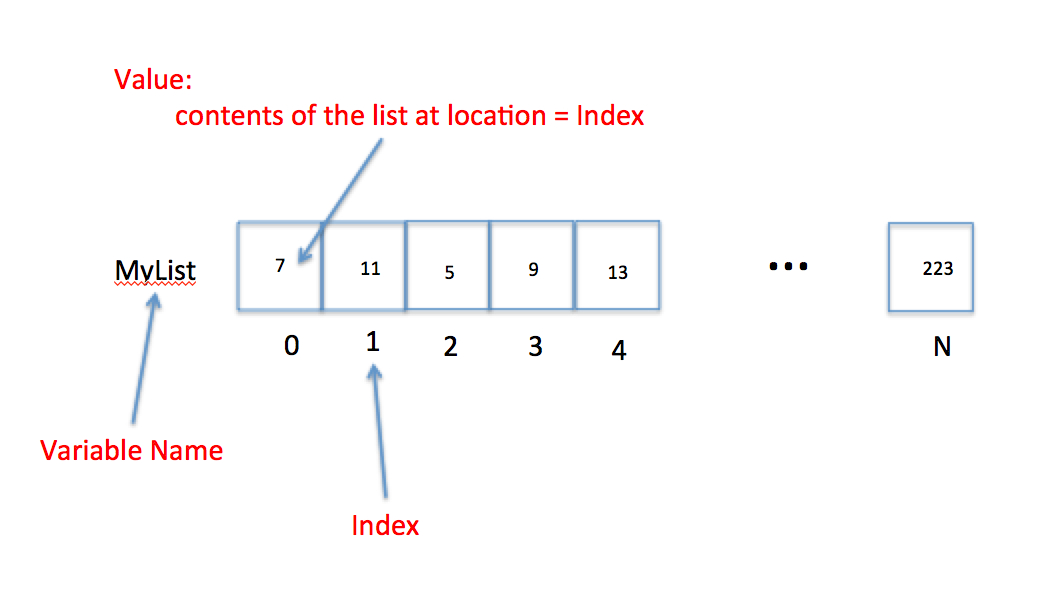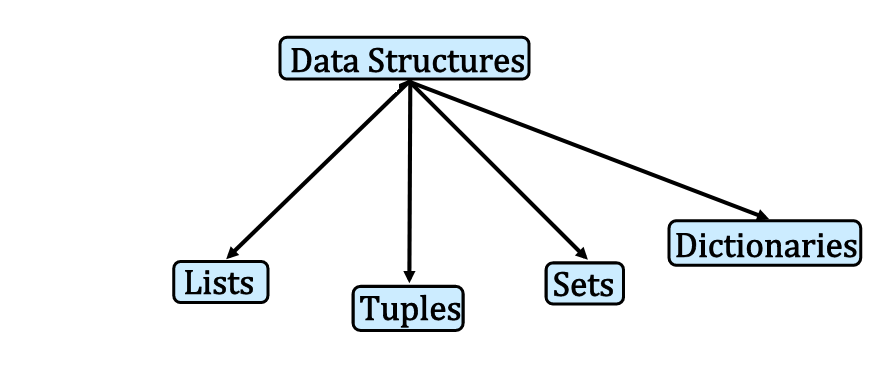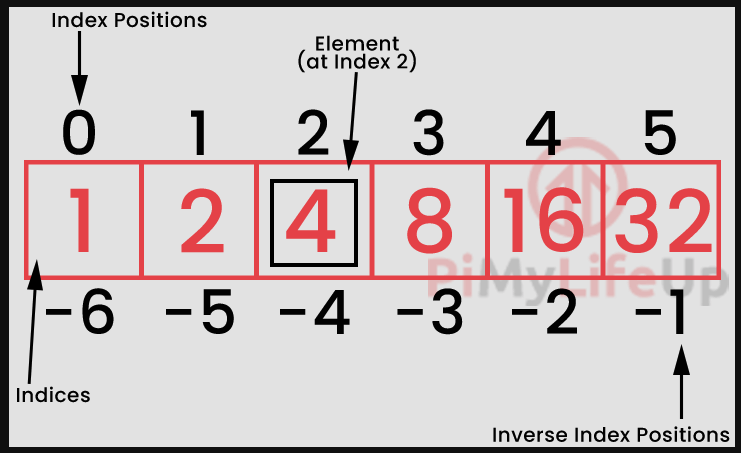Lists¶
A list is a collection of data that are somehow related. It is a convenient way to refer to a
collection of similar things by a single name, and using an index (like a subscript in math)
to identify a particular item.
Consider the "math-like" variable $x$ below:
\begin{gather}
x_0= 7 \\
x_1= 11 \\
x_2= 5 \\
x_3= 9 \\
x_4= 13 \\
\dots \\
x_N= 223 \\
\end{gather}
The variable name is $x$ and the subscripts correspond to different values.
Thus the value of the variable named $x$ associated with subscript $3$ is the number $9$.
The figure below is a visual representation of a the concept that treats a variable as a collection of cells.

In the figure, the variable name is MyList, the subscripts are replaced by an index
which identifies which cell is being referenced.
The value is the cell content at the particular index.
So in the figure the value of MyList at Index = 3 is the number 9.'
In engineering and data science we use lists a lot - we often call then vectors, arrays, matrices and such, but they are ultimately just lists.
To declare a list you can write the list name and assign it values.
The square brackets are used to identify that the variable is a list.
Like:
MyList = [7,11,5,9,13,66,99,223]
One can also declare a null list and use the append() method to fill it as needed.
MyOtherList = [ ]
Python indices start at ZERO.
A lot of other languages start at ONE.
It's just the convention.
The first element in a list has an index of 0, the second an index of 1, and so on.
We access the contents of a list by referring to its name and index.
For example
MyList[3] has a value of the number 9.


